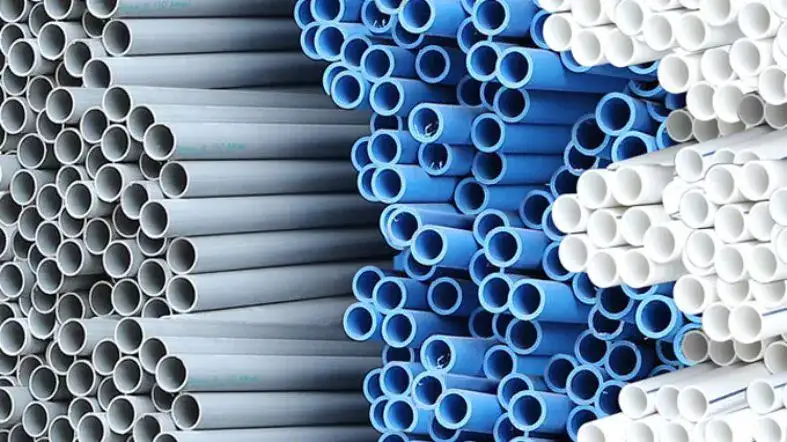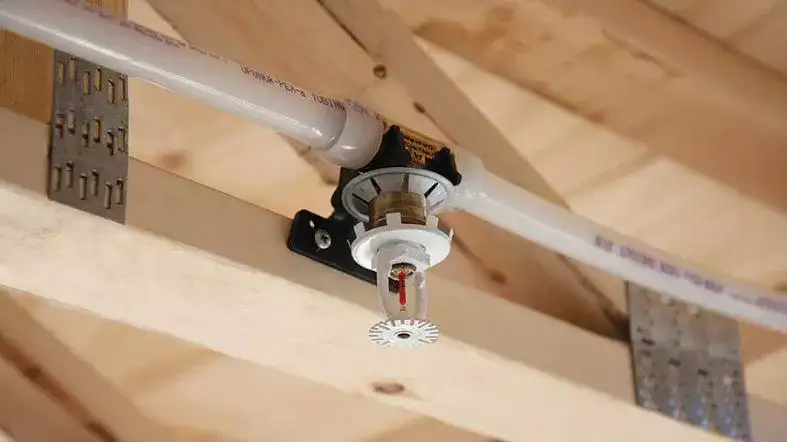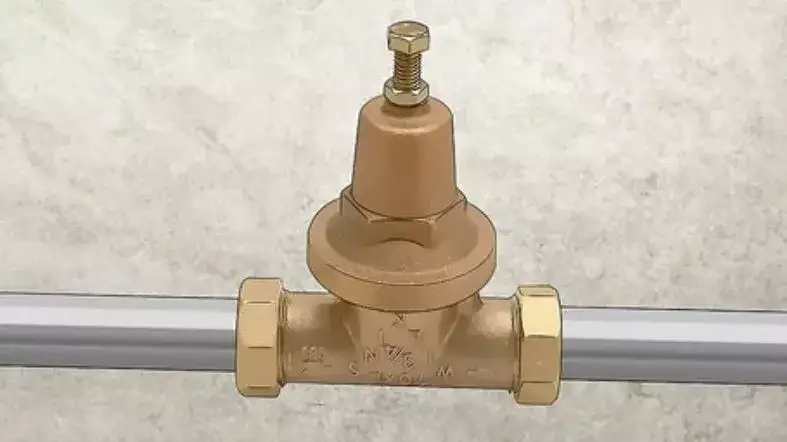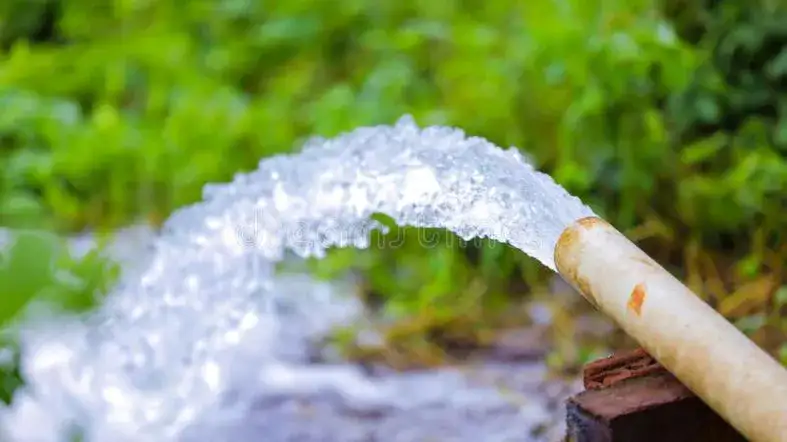When installing a sprinkler system, you will need to choose the size of pipe you will use. So, what size pipe for sprinkler system?
We will explore the different sizing options for sprinkler systems and help you decide which option is best for you.

What Size Pipe For the Sprinkler System?
For sprinkler systems, the diameter of PVC pipes ranges from 1/2 inch to 2 inches, depending on the system’s capacity. The pipe size can be determined by the sprinkler head’s flow demand and the velocity of the water. A 3/4 inch pipe can meet a flow demand of 9.8 gpm with a velocity of 4.7 ft/s.
Sprinkler System Pipe Size Chart:
| Flow Rate (GPM) | Pressure (PSI) | Pipe Size (Inches) |
|---|---|---|
| 0-10 | 20-50 | 3/4 |
| 10-20 | 20-50 | 1 |
| 20-35 | 30-50 | 1 1/4 |
| 35-50 | 30-50 | 1 1/2 |
| 50-80 | 40-70 | 2 |
| 80-120 | 50-75 | 2 1/2 |
| 120-160 | 60-75 | 3 |
| 160-240 | 70-80 | 4 |
What Type Of Pipe To Use For Sprinkler Systems?
There are two types of irrigation pipe that you can use for your sprinkler system: rigid PVC and flexible polyethylene.
Each type has its own advantages and disadvantages, so it is important to choose the right one for your needs.
Rigid PVC Pipe
PVC pipes are a popular choice for sprinkler systems because they are lightweight, durable, and easy to install.
They are also resistant to corrosion and chemical damage.

CPVC Pipe
CPVC pipes are similar to PVC pipes but can handle higher temperatures and pressures. They are also more expensive than PVC pipes.
Polyethylene Pipe
Polyethylene pipes are flexible and can be easily bent to fit the contours of your yard.
They are also resistant to freeze damage, making them a good choice for colder climates.
Galvanized Steel Pipe
Galvanized steel pipes are a heavy-duty option that can handle high water pressure and are resistant to corrosion.
They are typically used in commercial or industrial settings.
>> What is the size of pipe for shower drain?
How to Measure the Perfect Pipe Size for Sprinkler Systems
Start with the Water Source
Locate your home’s water source. It’s usually an outdoor tap. Here, we’ll find out how much water we have.
Step by Step:
- Turn off all water devices in your home. Make sure no taps are on.
- Grab a bucket. Make sure it’s empty and clean.
- Turn on the water source full blast.
- Fill the bucket for 10 seconds.
- Turn off the water.
- Measure how much water is in the bucket. This tells you your water flow.
Check the Pressure
Water pressure is a force. It pushes water through pipes.
Step by Step:
- Buy a pressure gauge. You can find them in most hardware stores.
- Attach it to your water source.
- Turn the water on.
- Read the number on the gauge. This is your water pressure.
- Write down the number. It’s important for later.
Plan Your Zones
Sprinkler systems have zones. Each zone waters a part of your garden.
Step by Step:
- Draw a simple map of your garden.
- Divide it into sections. Each section is a zone.
- Big zones need big pipes. Small zones need small pipes.
Choose the Right Pipe
The right pipe carries the right amount of water. Not too much, not too little.
Step by Step:
- Look at your water flow and pressure. Remember them?
- For high flow and pressure, choose wider pipes. They’re often called “3/4 inch” or “1 inch” pipes.
- For low flow and pressure, go with narrower pipes. They might be called “1/2 inch” pipes.
Think About Pipe Length
Longer pipes reduce pressure. So, we don’t want them too long.
Step by Step:
- Measure the distance for each zone on your map.
- Keep pipe runs short. Under 200 feet is good.
- If it’s longer, split the zone. Use two pipes instead.
Consider Pipe Material
Different pipes have different strengths. Some are strong, some are flexible.
Step by Step:
- PVC pipes are common. They’re white and hard.
- Poly pipes are flexible. They’re often black.
- For deep burials, PVC is better. For surface laying, Poly is easier.
Double-Check Everything
Before buying, always double-check. It helps avoid mistakes.
Step by Step:
- Go over your notes. Make sure they match your garden map.
- Think about future needs. Want more plants? Plan for it.
- Visit the store. Ask an expert if you’re unsure.
Factors Influencing Pipe Size Selection for Sprinkler Systems
Water Pressure and Flow Rate
Water moves in pipes due to pressure. Think of it like wind in a tunnel. The more wind, the faster things move. High pressure pushes more water. Low pressure means less water. Check it using a gauge.
Area to be Covered
Big gardens need more water. Small gardens need less. Measure your garden’s length and width. Multiply them to know the size.
Sprinkler Type and Requirements
Sprinklers come in different shapes and sizes. Some sprinkle water far, some near. Check the sprinkler’s label. It tells you how much water it needs.
Rotary Sprinklers
These sprinklers spin. They shoot water in a circle, covering a big area. Rotary sprinklers need more water. They cover larger spaces.
Fixed Spray Sprinklers
They don’t spin. Water sprays out in one direction. Use them for small areas. They need less water than rotary ones.
Soil Type and Water Absorption Rate
Different soils drink water at different rates. Some sip slowly, some gulp fast. Sandy soil drinks fast. Clay soil drinks slow. Know your soil type!
Design and Spacing Considerations
Where you place sprinklers matters. Too close, they waste water. Too far, plants get thirsty. Place sprinklers so their sprays touch. It gives even water to plants.
Local Climate and Evaporation Rate
Hot places make water vanish fast. Cold places, not so much. In hot places, use more sprinklers. Plants need extra water then.
Durability and Material Preferences
Strong pipes last long. Weak ones break easily. PVC is tough. Poly is bendy. Choose based on your garden’s needs.
Economic Factors
Money matters. Don’t spend too much, but don’t buy cheap and regret later. Compare prices. See reviews. Then buy.
Local Building Codes and Regulations
Every place has rules. They tell you what you can and can’t do. Check local laws before digging. Some places have pipe rules.
Future Expansion Plans
Plan ahead. Maybe you’ll want a bigger garden later? Buy pipes a bit bigger. They’ll help if you expand your garden.
What Is The Average Depth Of A Residential Sprinkler System?

To determine how deep to dig the trenches for your sprinkler lines, you must take into account various factors such as the sizes of different components that make up the underground system.
Supply Line Depth
The supply line is the main water source for your in-ground sprinkler system.
The average depth for a residential sprinkler system’s supply line is 3/4 to 1 inch in diameter.
The lines should be at least as deep as the pipe’s diameter plus 4 inches.
By burying the pipe underground, we will make sure it is better insulated and won’t as easily be disrupted by what’s happening on the surface.
Sprinkler Depth

The average sprinkler depth is 4 to 6 inches. The main reason for this is so that the head of the sprinkler is not sticking up too high out of the ground.
You don’t want children or lawnmowers hitting them and breaking them.
Another reason for a relatively shallow depth is so that the water will evenly distribute across the head’s width.
To provide an example, a 2-inch sprinkler on top of a 3-inch riser that has a 1-inch supply line needs to be buried at least 6 inches deep.
Depth For Grass Surfaces
The average depth for a residential sprinkler system’s supply line is 3/4 to 1 inch in diameter. The lines should be at least as deep as the pipe’s diameter plus 4 inches.
By burying the pipe underground, we will make sure it is better insulated and won’t as easily be disrupted by what’s happening on the surface.
The sprinkler holes are set at a depth of 3 feet, with the riser and supply line ensuring that the grass isn’t damaged.
The depth of an in-ground sprinkler system varies depending on different factors.
It is important to take into account all of these factors before you start your project so that you can ensure a successful installation.
Does Increasing Pipe Size Increase Water Pressure?

Increasing the size of a pipe may or may not increase water pressure, depending on various factors. Here are some issues to consider:
Flow Rate
Increasing the size of a pipe will increase the flow rate, but it does not necessarily mean that the water pressure will increase.
In fact, the water pressure may decrease if the flow rate is too high.

Friction Loss
As water flows through a pipe, it encounters resistance, which results in a loss of pressure known as friction loss.
Larger pipes have less friction loss than smaller pipes, which means that the water pressure will be higher.
Water Demand
The amount of water needed to meet the demands of a household or a commercial building will also impact the water pressure.
If the water demand is greater than the supply, increasing the pipe size may not increase water pressure.

Pump Capacity
If the water supply is from a pump, increasing the pipe size may not increase the water pressure if the pump is not powerful enough to generate the necessary pressure.
Distance
The distance from the water source to the outlet also affects water pressure. If the distance is too great, increasing the pipe size may not increase water pressure.
FAQs on what size pipe for sprinkler system
What is the recommended pipe size for a residential sprinkler system?
The recommended pipe size for a residential sprinkler system is usually 1 inch in diameter.
This size is appropriate for most residential systems and can handle water pressure up to 60 PSI.
How do I determine the pipe size for a larger commercial sprinkler system?
The pipe size for a commercial sprinkler system depends on various factors such as water pressure, flow rate, and the size of the area to be covered.
A professional plumber or irrigation specialist can help determine the appropriate pipe size for your specific needs.
Can I use different pipe sizes for different zones in my sprinkler system?
Yes, it’s possible to use different pipe sizes for different zones in a sprinkler system.
This approach can help ensure that each zone receives the appropriate water pressure and flow rate.
Can I use a smaller pipe size to save money?
While it may be tempting to use a smaller pipe size to save money, it can result in poor water pressure and coverage.
Select the appropriate pipe size based on the specific needs of your sprinkler system to ensure proper water distribution and coverage.
Final Thoughts
Selecting the right size pipe for a sprinkler system is critical to ensure proper water flow and coverage.
The size of the pipe will depend on factors such as the water pressure, the distance between sprinklers, and the flow rate.
It’s important to consult with a professional to determine the appropriate pipe size for your specific needs.

